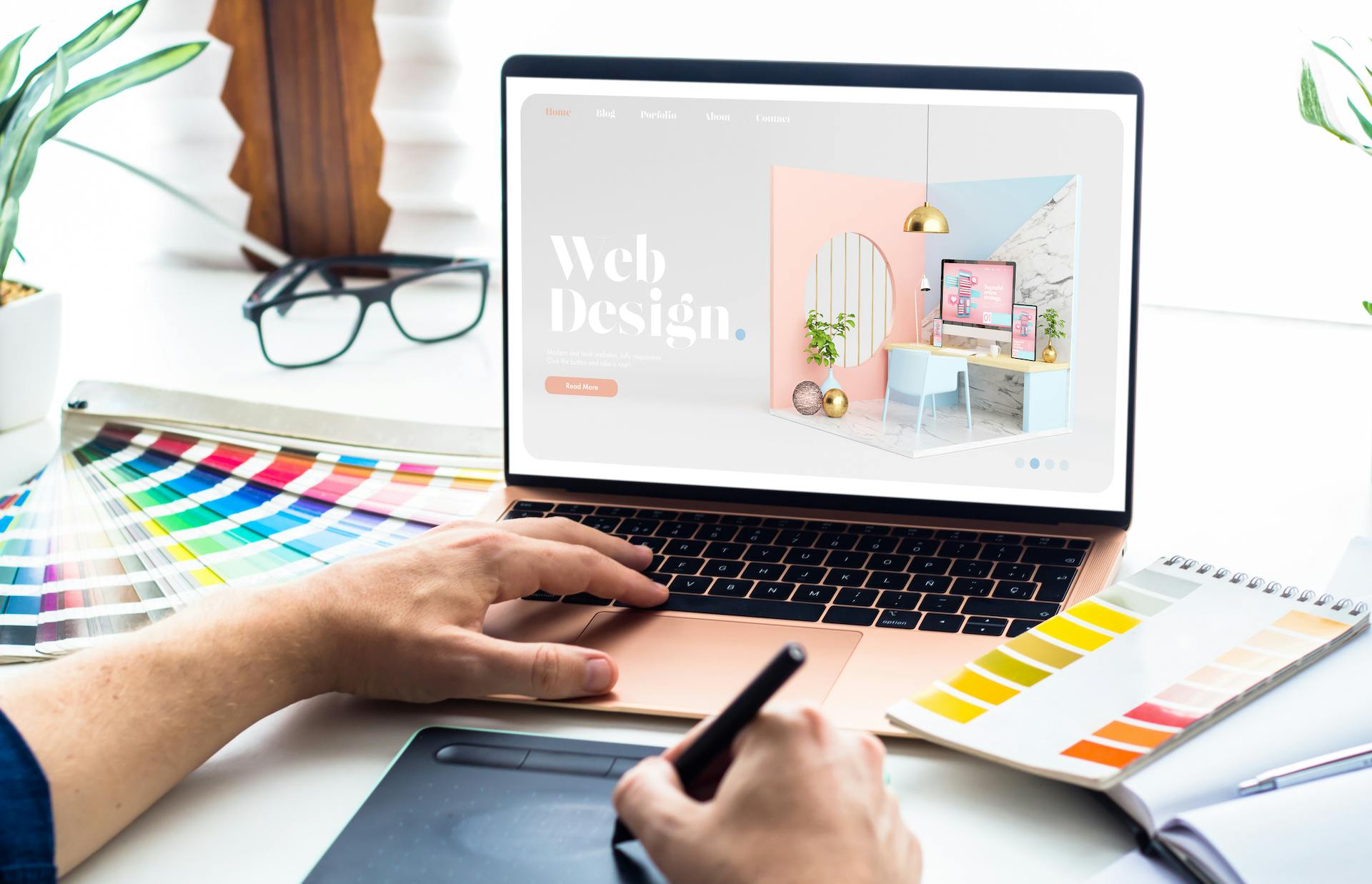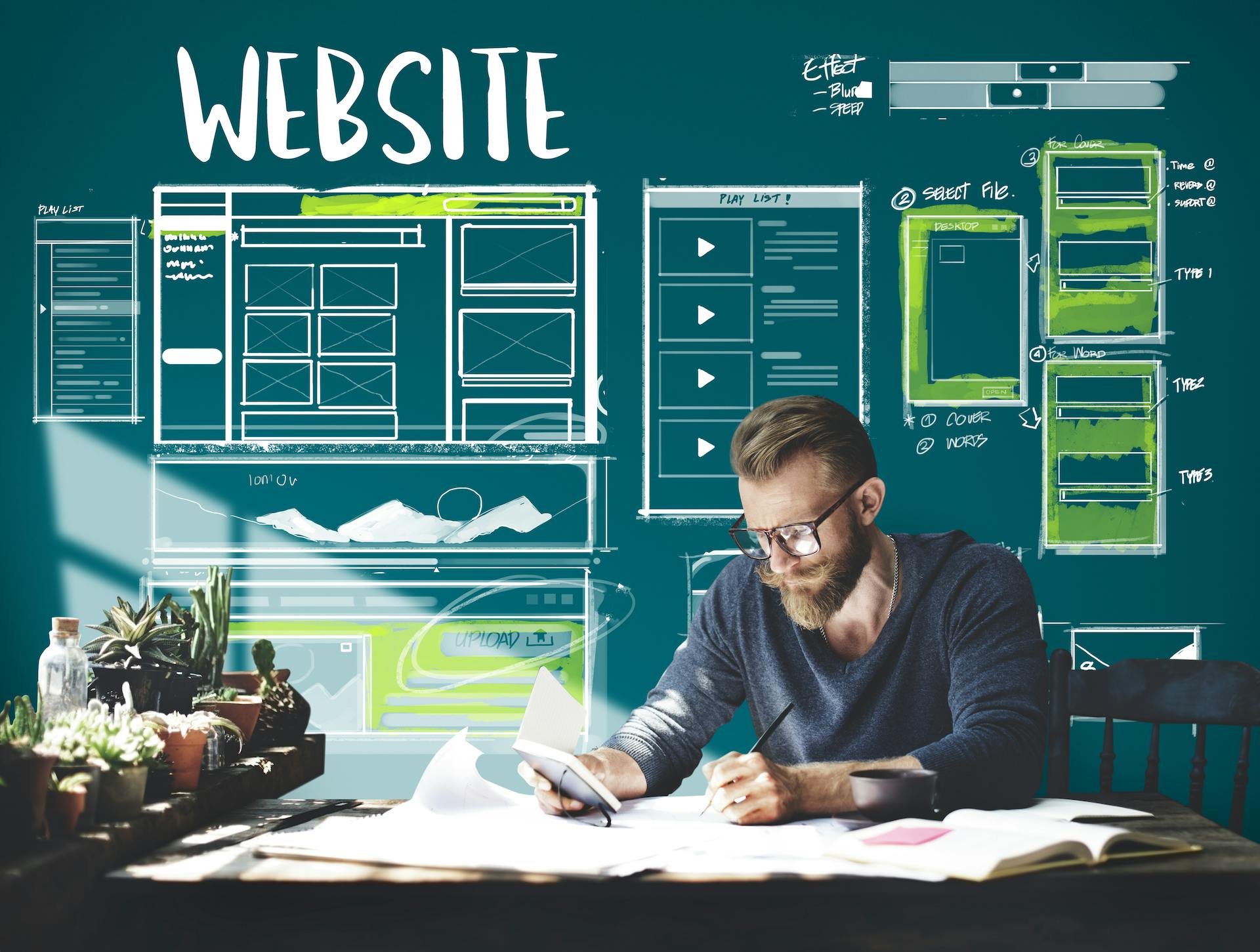In the fast-paced digital world, mastering the essential elements of web design has become crucial for success. According to recent studies by the Nielsen Norman Group, visitors form their first impression of a website within 50 milliseconds, making the implementation of effective web design visual elements more critical than ever.
This was powerfully demonstrated in early 2024 when Spotify unveiled its revolutionary "DJ" feature interface, which seamlessly blends AI-driven personalization with intuitive visual design elements – the interface saw a 73% user retention rate in its first month, primarily attributed to its thoughtful implementation of core design principles.
Understanding and strategically applying these elements of web design can transform an ordinary website into an exceptional user experience that drives engagement and boosts conversion rates by up to 200%, based on Google's Web Dev research.
Key Elements of Web Design: Building Blocks for Success
When it comes to creating outstanding websites, understanding and implementing the core elements of web design can significantly impact user engagement and conversion rates. Recent data from Adobe's State of Digital Experience report shows that websites with well-implemented design elements see an average increase of 83% in user engagement metrics.
Color Theory in Web Design
Color theory stands as one of the most crucial web design visual elements, capable of evoking specific emotions and conveying your brand's personality. Research from the University of Toronto reveals that color choices can influence users' purchase decisions by up to 85%. A striking example from early 2024 is Duolingo's redesigned interface, which introduced their "Ultra" subscription with a distinctive purple-black gradient scheme. This careful color selection, combined with strategic animations, led to a 48% increase in premium subscription conversions within the first quarter of 2024, demonstrating the powerful impact of thoughtful color theory implementation.

Expert implementation of color theory includes:
- 60-30-10 Rule: Apply your dominant brand color to 60% of the space, secondary color to 30%, and accent color to 10%
- Psychological Impact: Leverage colors based on documented psychological responses:
- Blue: Trust and stability (used by 33% of top brands)
- Green: Growth and sustainability
- Red: Urgency and excitement
- Accessibility Standards: Maintain WCAG 2.1 compliance with a minimum contrast ratio of 4.5:1 for normal text
- Cultural Considerations: Adapt color schemes for different markets based on cultural color associations
Typography: A Core Web Design Element
Typography transcends simple font selection; it's a fundamental element of web design that directly impacts readability and user engagement. Technical best practices include:
- Font Loading Optimization:
- Implement font subsetting to reduce load times by up to 50%
- Use font-display: swap for optimal rendering
- Preload critical fonts using <link rel="preload">
- Responsive Typography:
- Implement fluid typography using clamp():
font-size: clamp(1rem, 0.5rem + 1.5vw, 2rem); - Maintain a minimum font size of 16px for body text
- Use modular scale ratios (1.618 for headlines, 1.2 for body text)
Layout: The Foundation to Elevate Website Design
Modern layout design has evolved significantly with the introduction of CSS Grid and Flexbox. Expert implementation includes:
- Performance-Optimized Grid Systems:
.grid-container {
display: grid;
grid-template-columns: repeat(auto-fit, minmax(250px, 1fr));
gap: clamp(1rem, 2vw, 2rem);
}
- Content-Aware Layouts:
- Implement aspect-ratio property for consistent image spaces
- Use CSS Container Queries for component-level responsiveness
- Apply fluid spacing using relative units
Essential Elements to Elevate Web Design
1. Navigation: A Critical Web Design Element
Recent eye-tracking studies by the Nielsen Norman Group reveal that effective navigation can reduce task completion time by up to 47%. Expert recommendations include:
- Implementation of Dynamic Search:
- Utilize predictive search with keyboard navigation
- Implement faceted search for complex sites
- Include search analytics for continuous optimization
- Mobile-First Navigation Patterns:
- Bottom navigation for mobile interfaces
- Progressive disclosure for complex menu structures
- Touch-target sizes of at least 44x44 pixels
2. Contrast and Balance
According to the Baymard Institute's research, proper contrast and visual hierarchy can improve task success rates by up to 89%. Expert techniques include:
- Mathematical Approaches to Balance:
- Apply the Golden Ratio (1:1.618) for layout proportions
- Use Rule of Thirds for content distribution
- Implement asymmetrical balance for dynamic layouts
- Advanced Contrast Techniques:
- Utilize micro-contrast for subtle hierarchy
- Implement dynamic contrast based on user preferences
- Apply spatial contrast through strategic white space

3. Performance-Driven Design
Modern web design elements must be optimized for performance. Google's Core Web Vitals metrics show that:
- Loading Performance:
- Largest Contentful Paint (LCP) should occur within 2.5 seconds
- First Input Delay (FID) should be less than 100 milliseconds
- Cumulative Layout Shift (CLS) should be less than 0.1
- Implementation Strategies:
- Use responsive images with srcset and sizes attributes
- Implement effective lazy loading techniques
- Optimize critical rendering path
4. User Design and Interaction
Based on the latest Human-Computer Interaction research, effective interaction design can increase user satisfaction by up to 55%. Key technical considerations include:
- Micro-interactions:
- Implement subtle animations (max 400ms duration)
- Use CSS Custom Properties for consistent motion design
- Apply FLIP animation techniques for performance
- Accessibility Implementation:
- Support keyboard navigation
- Implement ARIA labels and roles
- Ensure screen reader compatibility
Measuring Success: Analytics and KPIs
To effectively elevate web design, implement these key metrics:
- Core Web Vitals: Monitor performance scores
- User Behavior: Track heat maps and session recordings
- Conversion Rate: Measure goal completion rates
- Accessibility: Regular WAVE and aXe testing
- User Satisfaction: Implement Customer Effort Score (CES) surveys
Elevate Your Web Design with Professional Support
Creating a website that successfully incorporates all these elements of web design requires deep technical expertise and continuous optimization. To truly elevate website design, consider working with Laetro, the platform that provides on-demand elite marketing and design support. Their team leverages data-driven insights and cutting-edge implementation techniques to create exceptional user experiences.
Ready to Transform Your Website?
Start a free consultation with a Creative Solutions Specialist to learn how you can elevate web design for your brand using these essential elements of web design, backed by expert implementation and ongoing optimization.

